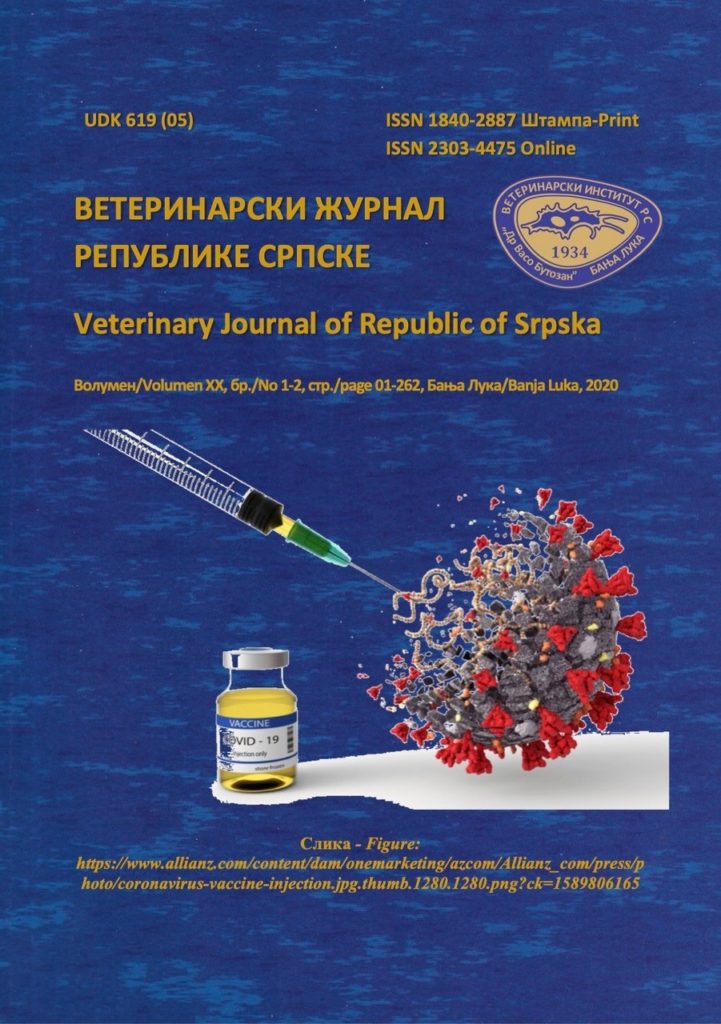THE EFFECT OF ASEPTIC PODODERMATITIS ON MILK PRODUCTION
DOI:
https://doi.org/10.7251/VETJEN2001133SAbstract
Lameness in high-yielding dairy cows is one of the main factors of economic losses on farms. These losses include treatment costs, reduced milk production, reduced fertility, and an increased number of cows excluded from production. Lameness in cows is a painful condition that leads to lying down for a longer period of time, refusal to move as well as reduced food consumption. Reduced food consumption consequently leads to reduced milk production. The experiment was performed on a dairy farm in Vojvodina. The aim of this study was to examine the effect of aseptic pododermatitis on milk yield in cows. The experiment included 40 Holstein-Friesian cows in their second lactation. All selected cows had the same body condition score and were at the same phase of lactation. The cows were divided into 2 experimental groups. The first group included cows diagnosed with laminitis and with pronounced lameness. The second group included healthy cows without pronounced lameness. Daily milk production was measured initially in both groups of cows, and then on the 1st, 7th, and 21st day after hoof processing in a group of cows diagnosed with laminitis. After statistical processing of the obtained results, a significantly lower daily milk production was observed in cows with pronounced symptoms of aseptic pododermatitis compared to healthy cows. It was also noticed that, during the first 7 days after treatment, there was no significant increase in milk production in cows with aseptic pododermatitis. On the first day after treatment, reduced milk production was noticed, as a consequence of the additional stress to which the cows were exposed during the processing and therapy of the hooves. The greatest exponential growth in milk production in treated cows was recorded between 7 and 21 days after treatment, with a significant increase only
after three weeks.

